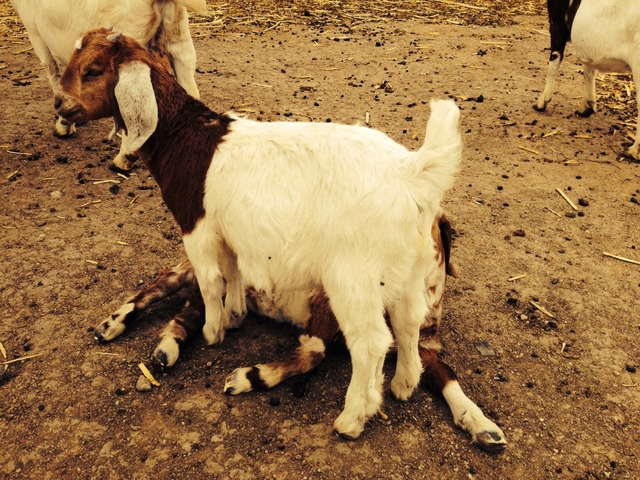

(In fact the term “underfoot” fits them well.) They are possibly the most intelligent breed. LaManchas will follow you anywhere and therefore are a little easier to train. LaManchas are one of the most consistently lovable and agreeable of all the breeds for a pack goat. Horns are of a lighter brown or black, and smallish, tending to curl back more like the Big-Horn sheep as the animal ages. They are a hearty sturdy breed of medium size that are very people orientated. Their ears must be 2 inches or smaller to conform to their breed standard. Even after years of hybridization, however, the true LaMancha characteristics continue to dominate. As few true-type bucks were available, those of the other breeds were used to propagate the race. She owned approximately 125 in the 1920's. Phoebe Wilhelm is reported to be the first to establish a herd comprised of Lamanchas. The name "LaMancha" stuck and became the accepted term for the American version as well. The inscription was unclear, but the words, "LaMancha, Cordoba, Spain," were easily read. In more recent history, a crate of the short-eared goats was sent to the Paris World's Fair for exhibition (1904). This strain is usually thought to be the forerunner of our present LaMancha. If not true LaMancha's, these animals were very close to them. As the Spanish missionaries were colonizing California, they brought with them a short-eared breed of goat suitable for either milk or meat production. The exact background is as yet, however, unknown. References were made to short-eared goats as far back as ancient Persia. Our LaManchas have, perhaps, the most obscure history of any of the popular breeds. Any experienced goat can develop this sense, but Alpines seem to be the most adept at it. An older, experienced Alpine can be surprisingly trail wise, remembering the exact lay of a trail it's been on before, even when the trail is covered by a foot of snow, or remembering significant details about a route off the trail even with years between times on the trail. Only Toggs are as (or more) alert on the trail. Docile and friendly, but with instincts running at high gear. Watching for slight movements or gestures, even making eye contact with humans, traits not as common in other breeds. They train easily and are very in tune to the people with whom they work. Weak pasterns occur in some bloodlines, but seldom affect an exercised wether. They are very agile on rocks and very friendly. Color is of little significance to the packer, but to the breeder it is important because the prettier ones tend to sale first.Īlpines are hardy, adaptable animals that thrive in any climate while maintaining good health. The goats of Alpine type that were brought to the United States where they have been selected for much greater uniformity, size, and production.Īlpine goats can come in any color, their ears are upright and they are an alert. The Alpine is a breed of goat that originated in the Alps. Does are not recommended as pack animals due to udder chaffing and that the udder may snag on brush and harm the goat. Most pack goats are wethers (neutered males) because they tend to get larger than the females and do not have the odor and behavior problems of bucks. It is not recommended to take any fertile (able to reproduce) goat into the wilderness. Our Ober Taz was one of our smallest goats, but he had endurance and "heart" to spare on long treks.

A good temperament makes up for a lot of size faults with a pack goat. Personality is a major component of a good pack goat. A good pack goat needs to have long, good, strong legs. If you are interested you should check out as many breeds as possible before making your purchase. All the breeds have different personalities and different physical characteristics. The final judgement as to which breed is best will be the one you have and love.Ī pack goat can be any breed or cross-breed of goat. Any type of goat can be trained to pack, you just have to decide on what type of goat will fit your needs. There are six common dairy breeds here in the US and several meat-type breeds.


 0 kommentar(er)
0 kommentar(er)
